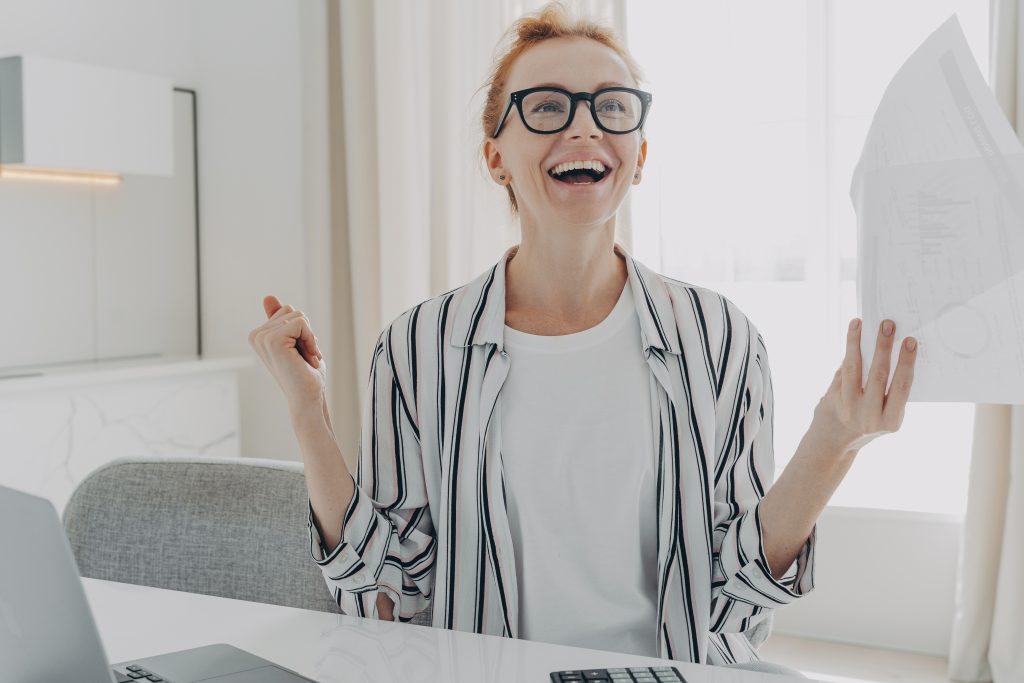Paying off debt is a common financial goal for many individuals. Whether it’s credit card balances, personal loans, or other types of debt, having a plan in place to become debt-free is essential. Fortunately, there are several smart strategies that can help accelerate the debt repayment process. In this article, we will discuss five effective ways to pay off debt and achieve financial freedom. These strategies include utilizing personal loans, taking advantage of balance transfer credit cards, using the debt snowball method, exploring debt consolidation options, and focusing on improving spending habits. By implementing these strategies, individuals can not only reduce their debt burden but also develop healthy financial habits for the future.
1. Create a Financial Goal
The journey towards becoming debt-free starts with setting a clear financial goal. Creating a financial goal helps you stay focused, motivated, and accountable as you work towards paying off your debts. By setting measurable and achievable goals, you can take control of your finances and pave the way to a debt-free future.
When establishing your financial goal, it’s essential to consider your available income and expenses. This will help you set a realistic target that aligns with your financial situation. Take the time to analyze your monthly income and carefully evaluate your expenses, identifying areas where you can cut back to allocate more funds towards debt repayment.
Setting a measurable goal will enable you to track your progress and make adjustments along the way, if needed. It’s important to break down your overall debt amount into smaller, manageable milestones that you can celebrate as you achieve them. This approach provides a sense of accomplishment and keeps you motivated throughout the process.
Additionally, be mindful of your timeline. Determine a realistic period of time in which you aim to achieve your financial goal. This will help you stay focused and prevent discouragement. Remember, becoming debt-free is a journey that requires consistency and determination.
2. Choose the Right Method for Paying off Debt
When it comes to paying off debt, there are several methods you can choose from. Each method has its own advantages and may work differently based on your personal financial situation. Here are some smart strategies to consider:
- Debt Avalanche Method: This method involves prioritizing your debts based on interest rates. Start by paying off the debt with the highest interest rate while making minimum payments on the other debts. Once the highest-interest debt is paid off, move on to the next one. This approach can save you money on interest over time.
- Debt Snowball Method: If you prefer quick wins and psychological motivation, the debt snowball method might be right for you. With this strategy, you focus on paying off debts with the smallest balances first, regardless of interest rates. As you eliminate each smaller debt, you gain momentum and motivation to tackle larger debts.
- Debt Consolidation: Consolidating your debts allows you to combine multiple debts into one single payment. This can simplify your financial life and potentially lower interest rates. Consider a debt consolidation loan or a balance transfer credit card to consolidate your debts into one manageable payment.
- Increase Monthly Payments: Regardless of the method you choose, consider making extra payments whenever possible. By paying more than the minimum balance each month, you can pay down your debts faster and save money on interest.
When choosing the right method for paying off debt, consider factors such as interest rates, outstanding balances, and your personal financial situation. Assess your priorities and determine which method aligns best with your goals and abilities. Remember, the most important thing is to take action and stay committed to becoming debt-free.
3. Consolidate High-Interest Debts with a Personal Loan or Home Equity Loan
Consolidating high-interest debts with a personal loan or a home equity loan is a smart strategy to become debt-free. By merging multiple debts into a single loan, you can simplify your repayment process and potentially save a significant amount of money on interest.
A personal loan is an unsecured loan that can be used for various purposes, including debt consolidation. If you have good credit, you may qualify for a personal loan with a lower interest rate compared to your credit card debts or other high-interest loans. By using the funds from the personal loan to pay off these debts, you can streamline your payments into one manageable monthly installment.
Another option is to consider a home equity loan, which involves using the equity in your home as collateral. With a home equity loan, you can borrow a lump sum of money at a fixed interest rate and use it to pay off your high-interest debts. As a result, you can reduce your overall interest payments and potentially enjoy a longer repayment period.
Consolidating your high-interest debts with a personal loan or a home equity loan not only simplifies your financial obligations but also helps you save money on interest. By taking advantage of a lower interest rate, you can make more progress towards becoming debt-free and improve your overall financial situation. However, remember to carefully consider the terms and conditions of the loan and ensure that you have a solid plan in place to avoid accumulating more debt in the future.
4. Utilize a Balance Transfer Credit Card
One smart strategy to pay off high-interest credit card debt is to utilize a balance transfer credit card. This method allows you to consolidate multiple credit card payments into one, providing a more streamlined repayment process.
One of the key benefits of a balance transfer credit card is the opportunity to take advantage of a set period of low or even 0% interest. During this promotional period, which typically lasts from 6 to 18 months, you can make payments towards your debt without accruing additional interest. This can significantly reduce the amount of money you spend on interest payments and allow you to pay down your debt faster.
However, it is important to consider the potential fees associated with balance transfers. Many credit card issuers charge a balance transfer fee, typically around 3%-5% of the transferred balance. It is crucial to factor in these fees when determining if a balance transfer is the right option for you.
Additionally, it is important to be aware of the limitations on the promotional interest rate. Once the promotional period ends, the interest rate on the remaining balance will likely increase significantly. Therefore, it is essential to have a solid repayment plan in place to ensure that you can pay off your debt before the promotional period ends.
5. Consider Professional Debt Help if Necessary
If you find yourself struggling with debt and are having difficulty managing your monthly payments, seeking professional debt help can be a wise decision. Debt relief options provided by reputable companies can offer valuable assistance in navigating the path to becoming debt-free.
One significant advantage of seeking professional debt help is their ability to negotiate with creditors on your behalf. These experts have established relationships with creditors and can often secure more favorable terms for repayment. They work to reduce interest rates, waive penalties, and possibly even negotiate to settle debts for less than the full balance owed.
Professional debt help can also provide effective strategies for managing bills and creating a tailored debt repayment plan. They analyze your financial situation and develop a realistic budget to help you make the most of your income. With their guidance, you can prioritize expenses, cut unnecessary costs, and allocate extra cash toward paying off your debt faster.
Before deciding to work with a debt relief company, it is crucial to consider all available options and carefully evaluate their services. Look for reputable companies that offer transparent terms and fees. Additionally, explore alternatives such as debt consolidation loans or self-management strategies like the debt snowball or debt avalanche methods.

Conclusion
In conclusion, addressing high-interest debts first, creating a budget, and establishing an emergency savings account are essential steps toward becoming debt-free. By prioritizing high-interest debts, individuals can save on unnecessary interest payments and accelerate their debt repayment journey. A well-planned budget helps manage expenses, cut unnecessary costs, and allocate extra money towards debt repayment.
In addition, having an emergency savings account acts as a financial safety net, preventing individuals from accumulating new debt when unexpected expenses arise. Seeking professional guidance from reputable debt relief companies can provide valuable assistance in negotiating with creditors and devising an effective debt repayment plan. With dedication and the right strategy, it is possible for individuals to overcome their debts and achieve the goal of becoming debt-free.




